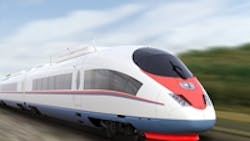The concept of high-speed rail is nothing new to Americans.
"People have been squabbling over high-speed trains in the U.S. since Lyndon Johnson introduced the High-Speed Ground Transportation Act," asserts Anthony Perl, author of "Transport Revolutions: Moving People and Freight Without Oil," and director of the Urban Studies Program at Vancouver's Simon Fraser University. Congress passed Johnson's legislation in 1965, and we're still debating the merits of high-speed rail here. Meanwhile, countries in Europe and Asia have been building rail systems that for decades have been whisking passengers from city to city at speeds up to 200-plus miles per hour. But the fact that high-speed trains have been zipping across other continents isn't necessarily a selling point for Americans.About the Author
Josh Cable
Former Senior Editor
Former Senior Editor Josh Cable covered innovation issues -- including trends and best practices in R&D, process improvement and product development. He also reported on the best practices of the most successful companies and executives in the world of transportation manufacturing, which encompasses the aerospace, automotive, rail and shipbuilding sectors.
Josh also led the IndustryWeek Manufacturing Hall of Fame, IW’s annual tribute to the most influential executives and thought leaders in U.S. manufacturing history.
Before joining IndustryWeek, Josh was the editor-in-chief of Penton Media’s Government Product News and Government Procurement. He also was an award-winning beat reporter for several small newspapers in Northeast Ohio.
Josh received his BFA in creative writing from Bowling Green University, and continued his professional development through course-work at Ohio University and Cuyahoga Community College.
A lifelong resident of the Buckeye State, Josh currently lives in the Tremont neighborhood of Cleveland. When the weather cooperates, you’ll find him riding his bike to work, exercising his green thumb in the backyard or playing ultimate Frisbee.
